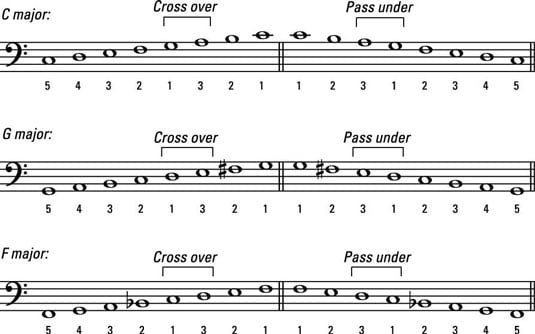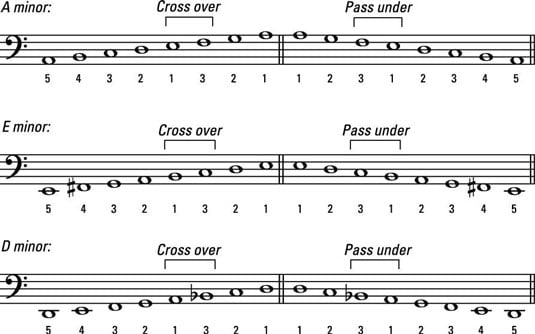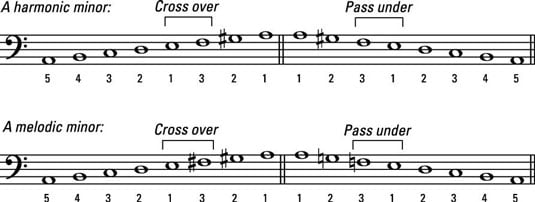-
Reading the bass clef
-
Playing with the correct fingering
-
Using nifty patterns and harmonies
-
Realizing how much you miss playing with the right hand
C, G, and F major
Here are three major scales for the left hand. You can use the same fingering, both up and down the scale, for all of these. Applying the major scale pattern, you play a scale with no sharps or flats (C major scale), one sharp (G major scale), and one flat (F major scale).
A, E, and D natural minor
You use the same fingering pattern in the three natural minor scales as you do in the three major scales.
A harmonic and melodic minor
These scales offer a good opportunity to practice your crossovers and pass-unders in the left hand. The scale patterns change at the same point you shift your hand position. Listen for smooth transitions and an even touch throughout each scale.
If you’re unsure of how to play these, you can watch a bunch of left-hand scales being played in Chapter 11, Video Clip 2.

